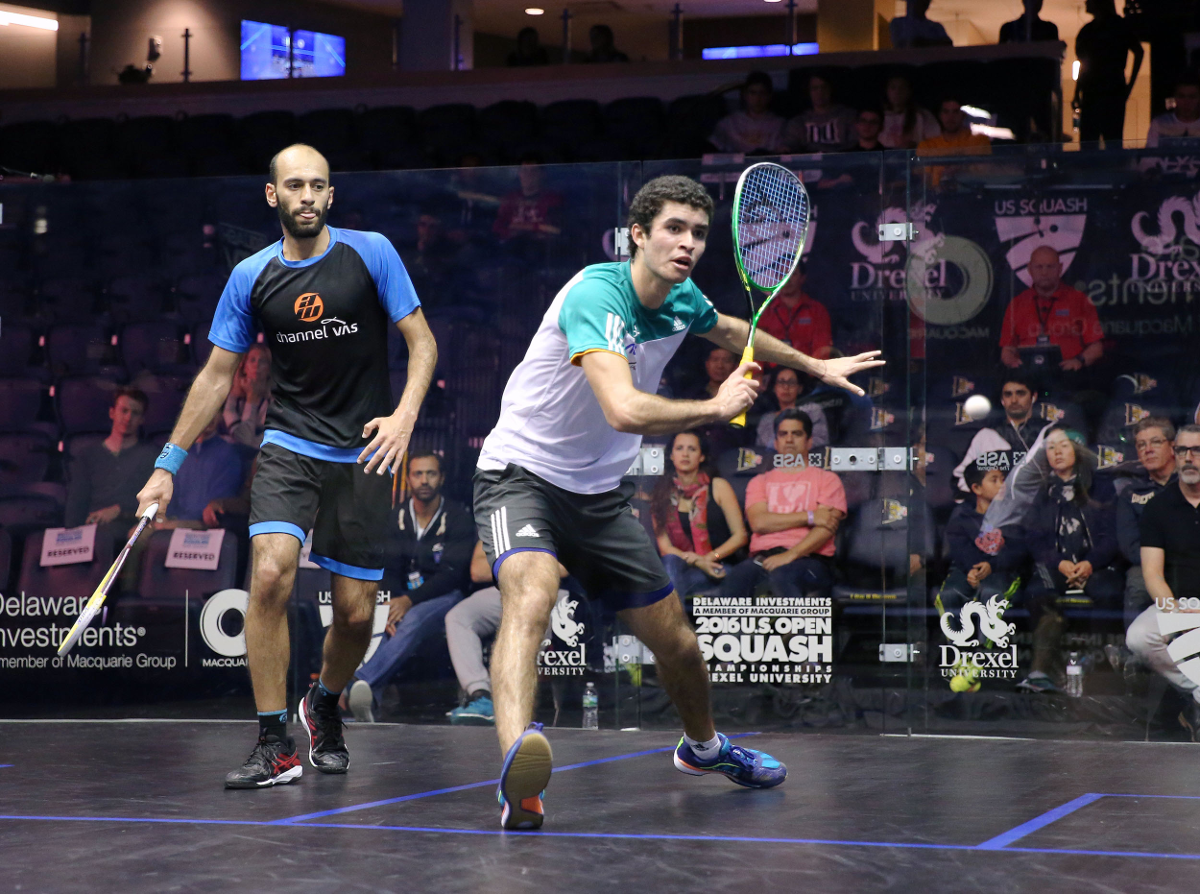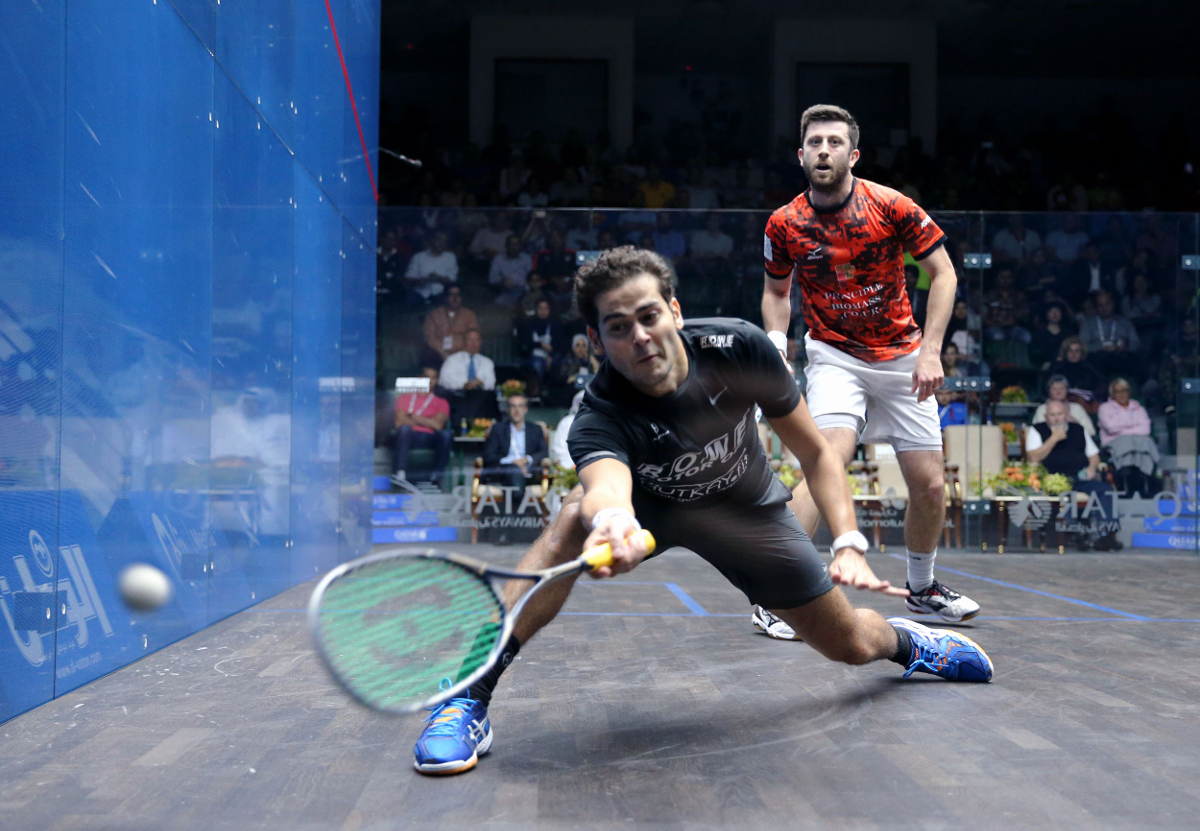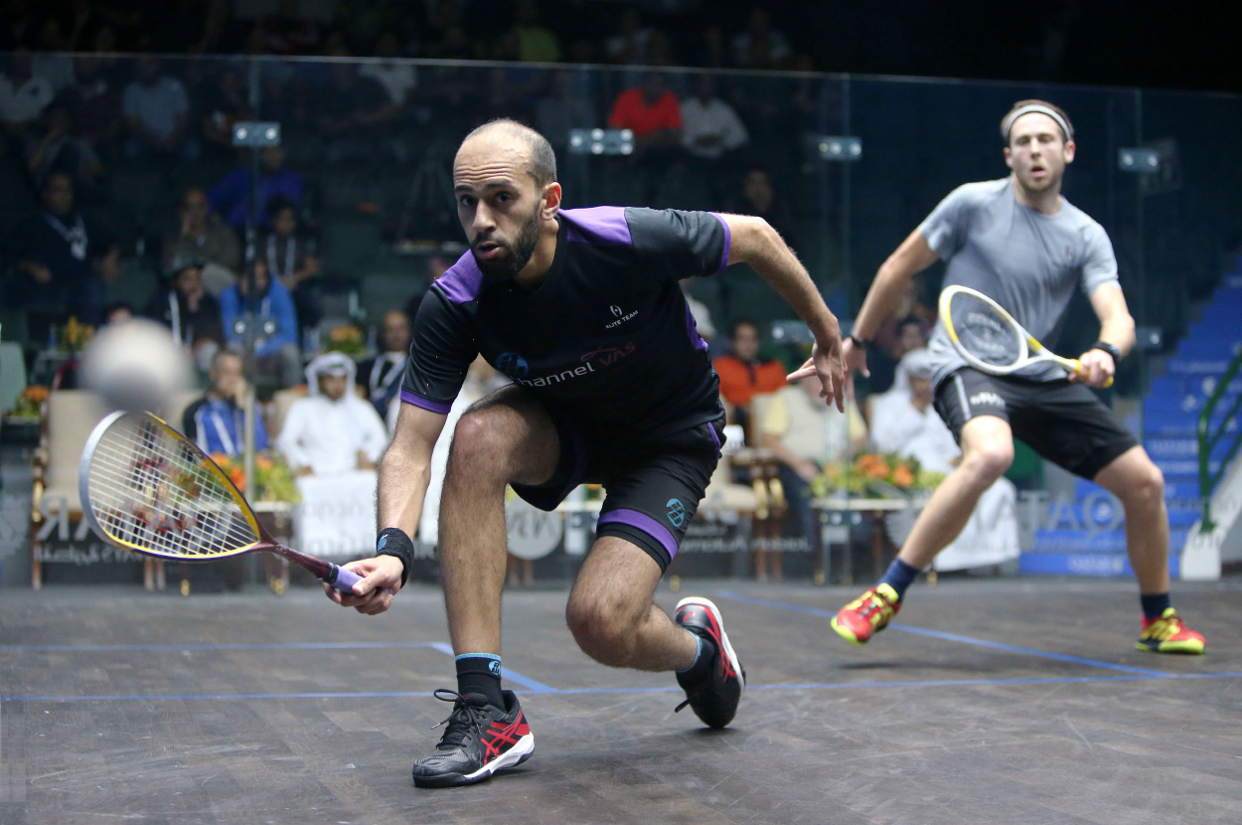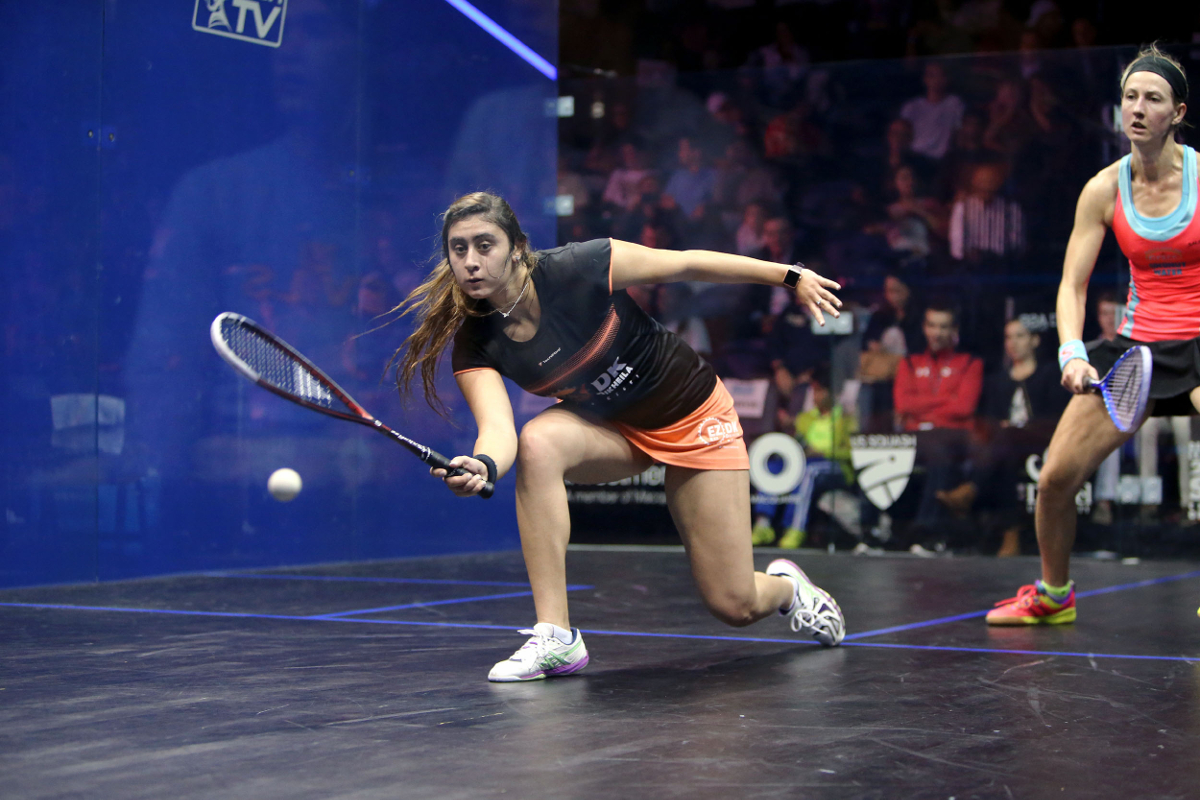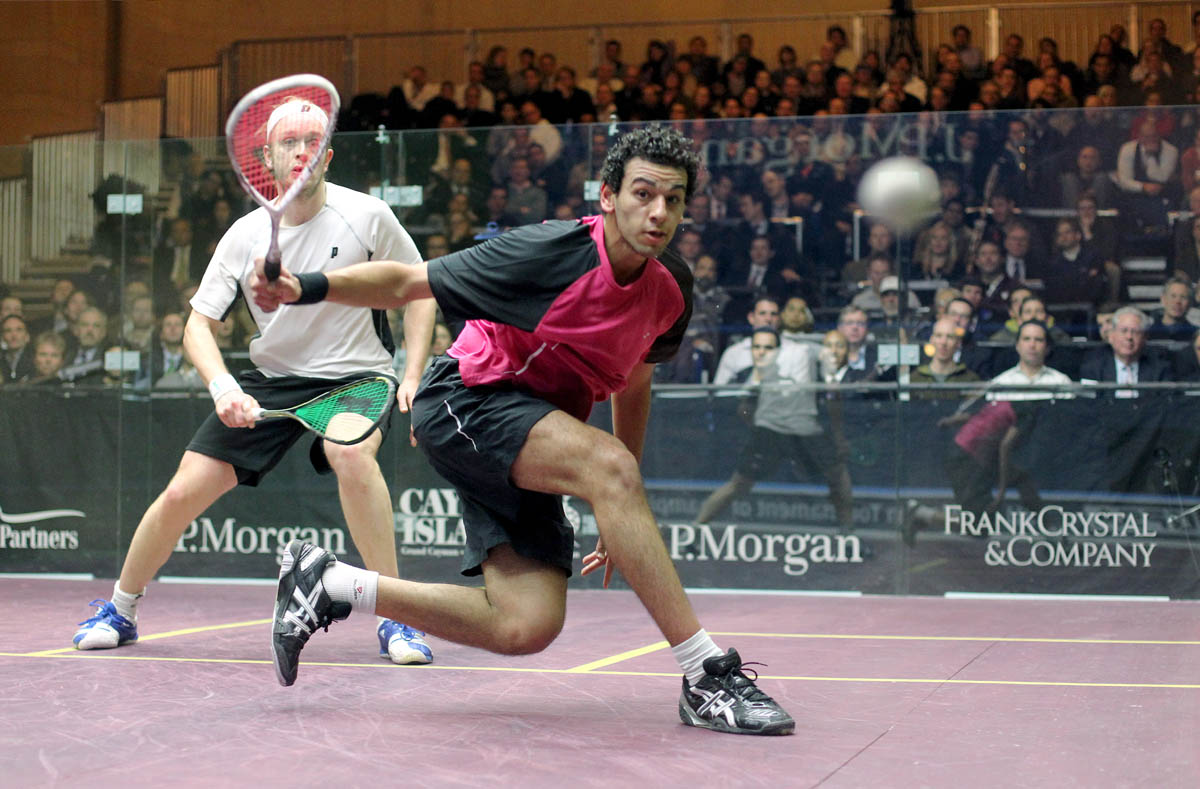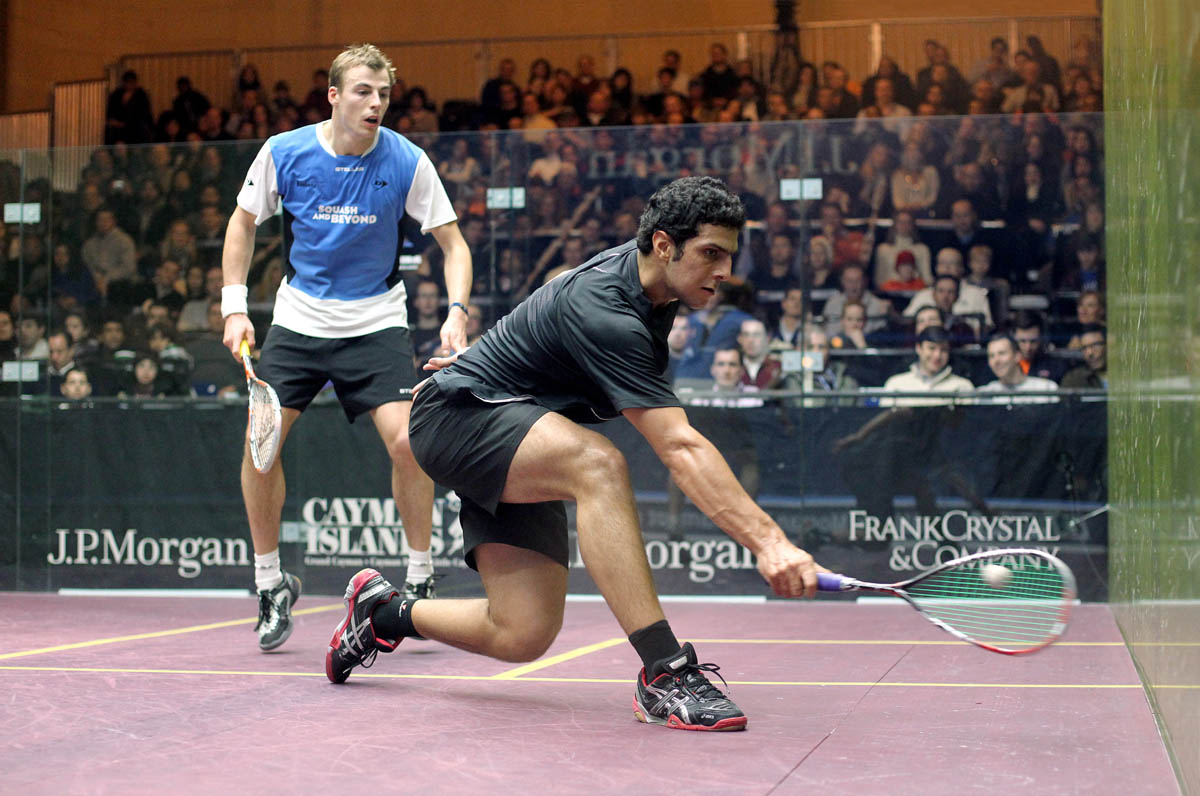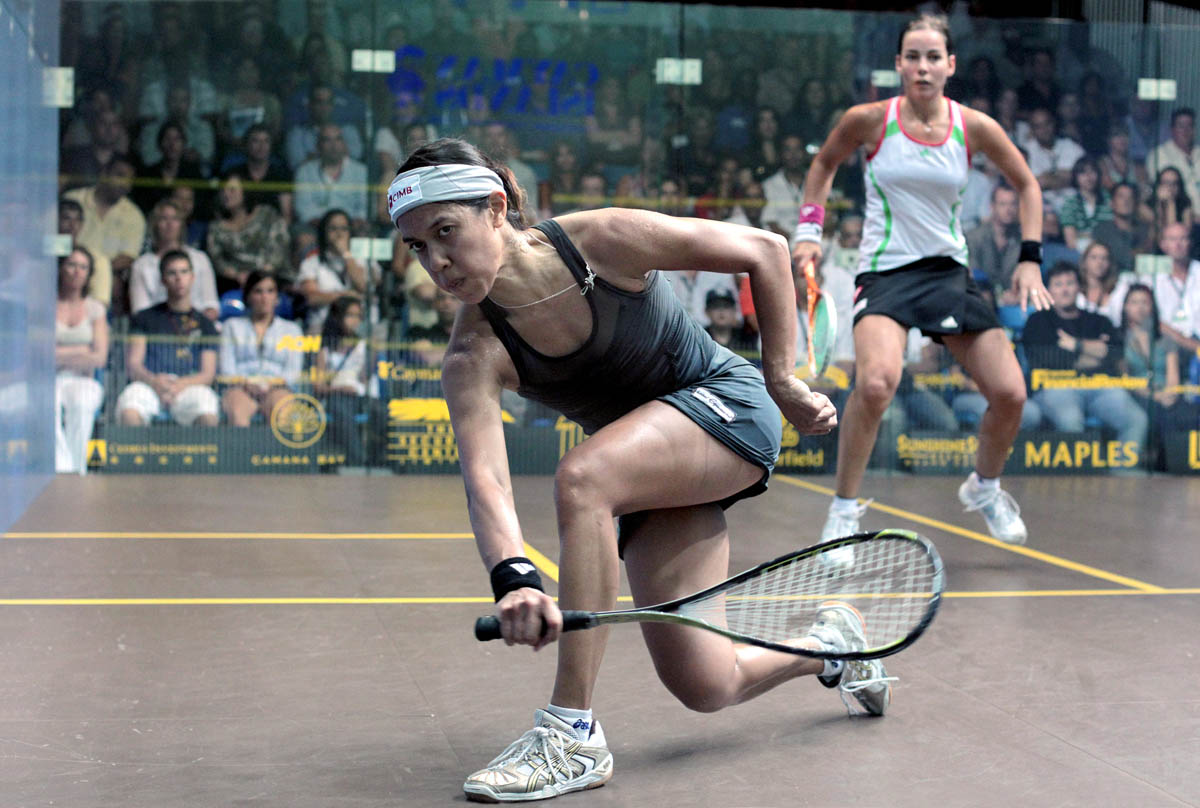Introduction - Elite Strategy
Elite Strategy
Introduction
The introduction focuses on observations of the elite player over a forty year period.
The observations reveal that the elite player employs the attacking tactic of deception which is generic to all elite players and it would appear that this logical tactic dominates the elite strategy. However, within this framework of deception the elite player also defends with logic.
Furthermore, these observations reveal the importance of zoning the court (elite player does not) and attaining the T (often the elite player attains the incorrect positioning).
Also, the pros and cons of attacking with deception and the strategy of defending are discussed?
Pressure
A major strategic goal of the elite player is to put pressure on the opponent. This strategy is generic to all squash players.
How does the elite player expose his opponent to pressure?
The tactic of deception is widely used. For example, when the player is "Near The T" the player attacks with deception with a variety of shots.
The below diagrams depict deceptive shots from the video which follows.
For example, when the player is Near The T the player volleys with a deceptive cross-court drop.

For example, when the player is Near The T the player hits a deceptive boast.
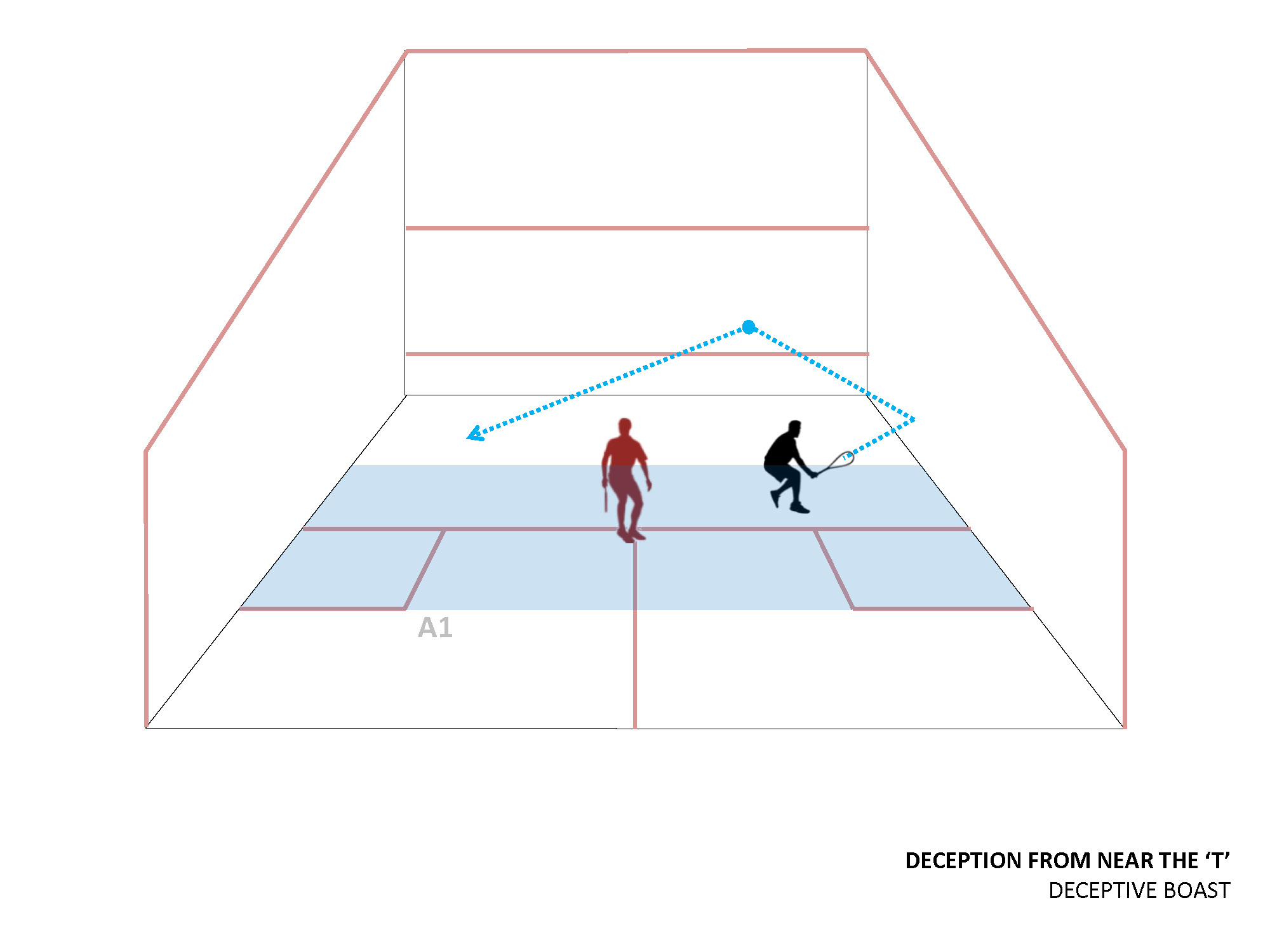
For example, when the player is Near The T the player hits a deceptive cross-court drive.

For example, when the player is Near The T the player hits a deceptive forehand cross-court drive.
Diagram Coming…..
Deception from Near The T.
Attacking from Near The T with deception is encouraged by all elite coaches
Further examples of deception Near The T (A Zone).
The below diagrams depict further examples of deceptive shots from the video which follows.
For example, when the player is Near The T the player hits a deceptive forehand straight drive.
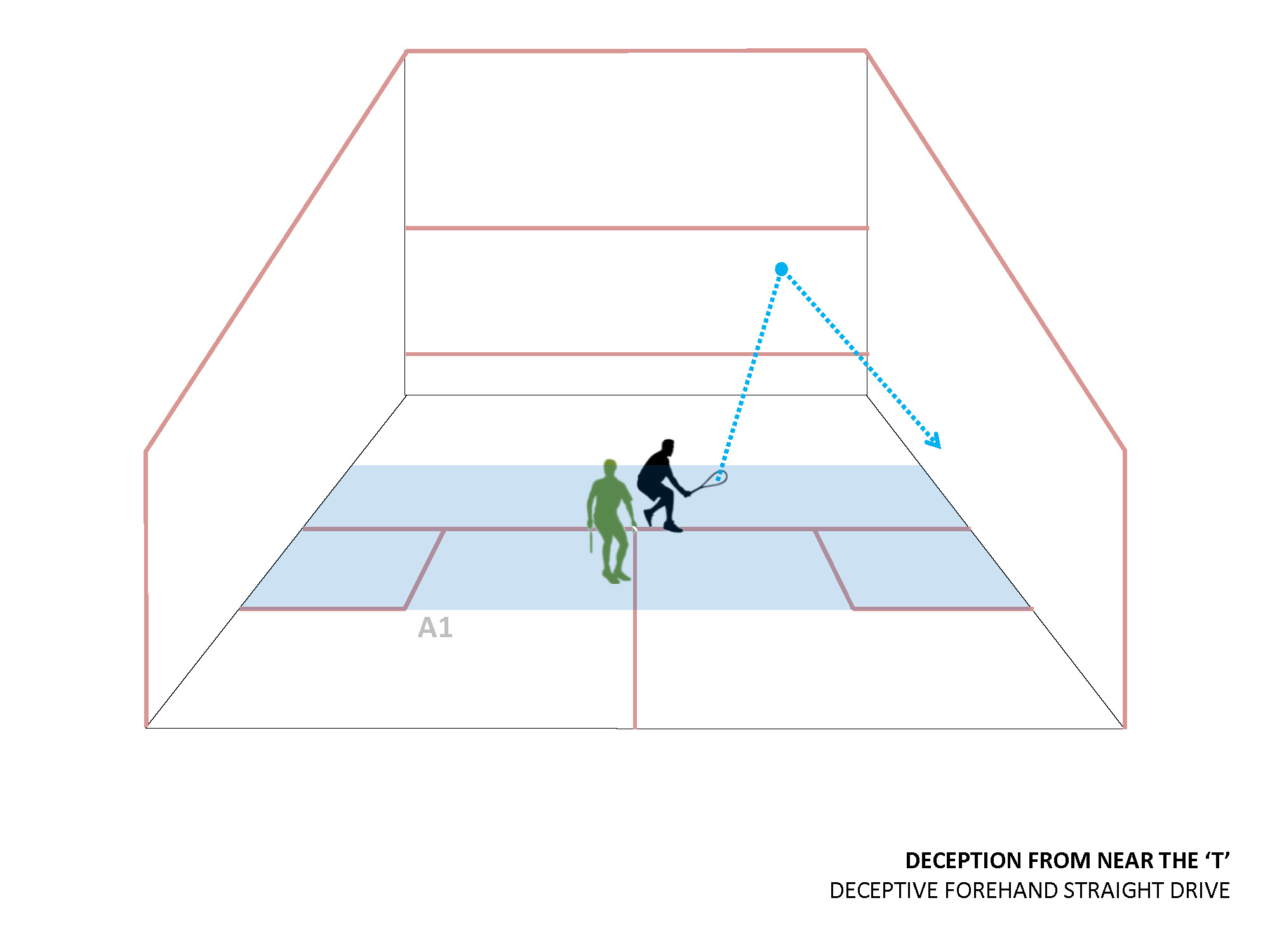
For example, when the player is Near The T on the backhand side and hits a deceptive cross court drive.

For example, when the player is Near The T on the backhand side and hits a deceptive straight drive.
Diagram coming.....
This tactic often combines with driving the ball extremely fast and low from the A zone.
There are pros and cons.
The player uses deception from the back corners.
The below diagrams depict deceptive shots from the video which follows.
For example, when the player is in the left back corner (D2 Zone) the player hits a deceptive backhand straight drive.

The player uses deception from the back corners. For example, when the player is in the left back corner (D2 Zone) the player hits a deceptive backhand cross-court drive.

The player uses deception from the back corners. For example, when the player is in the right back corner (D1 Zone) the player hits a deceptive forehand straight drive.

The player uses deception from the back corners. For example, when the player is in the right back corner (D1 Zone) the player hits a deceptive forehand cross-court drive.

Deception when driving the ball extremely fast and low from the D1 and D2 zones.
There are pros and cons.
The player uses deception from the front corners.
The below diagrams depict deceptive shots from the video which follows.
For example, when the player is in the left front corner (D3 Zone) the player hits a deceptive backhand coss-court drive.
Diagram Coming…….
Deception when driving the ball extremely fast and low from the D3 and D4 zones.
The player uses deception from the front corners. For example, when the player is in the left front corner (D3 Zone) the player hits a deceptive backhand straight drive.

The player uses deception from the front corners. For example, when the player is in the right front corner (D4 Zone) the player hits a deceptive forehand straight drive.

The player uses deception from the front corners. For example, when the player is in the right front corner (D4 Zone) the player hits a deceptive forehand cross-court drive.
Diagram Coming…..
Deception when driving the ball extremely fast and low from the D3 and D4 zones.
There are pros and cons.
Deception when hitting the ball at the opponent.
The below diagrams depict deceptive shots from the video which follows. This deception endeavours to force an error by cramming the opponent's swing.
The player is in the D4 zone and hits the ball straight at the opponent with a cross - court drive.

The player is in the A1 Zone (Near The T) and plays a forehand cross-court drive straight at the opponent.
Diagram coming.....
The player is in the A1 Zone (Near The T) and plays a backhand cross-court drive straight at the opponent.

Deception when hitting the ball at the opponent.
This tactic has become popular probably because it is an effective tactic in doubles.
Is the elite player concerned about attaining The T?
If so, what tactics does the player employ to attain The T?
Defending
Defending by hitting the ball high from the back corners is often used.
Is it possible that occasionally the elite player sprints from the front of the court to the back of the court and vice versa?
Is being out of position the just the result of poor quality or the player's choice of shot?
How to prevent being out of position.
Defending high with reasonable quality and attaining The T may prevent being out of position.
For a more specific perspective visit Members (Registered Users) Section Main Menu: My Strategy.
Then visit Menus: My Strategy to get a totally different perspective and Menu: My Strategy V Elite Strategy to compare both strategies.
Copyright South Australia Squash Academy Michael Nash All Rights Reserved


